Retro Replay Review
Gameplay
De-Animator’s gameplay hinges on a simple yet surprisingly engaging wave‐based shooting mechanic. From the outset, players find themselves in control of Herbert West, armed initially with a six‐shot revolver. The lack of character movement may seem restrictive at first, but this design choice places a premium on precision aiming and quick target prioritization. You’ll need to carefully balance shots between the slender, easily dispatched zombies and their bulkier counterparts that demand multiple revolver hits to bring down.
(HEY YOU!! We hope you enjoy! We try not to run ads. So basically, this is a very expensive hobby running this site. Please consider joining us for updates, forums, and more. Network w/ us to make some cash or friends while retro gaming, and you can win some free retro games for posting. Okay, carry on 👍)
As the game progresses into its second level, the shotgun is introduced, automatically unlocking a devastating close‐range option. The shotgun’s limited ammo supply forces players to decide when to conserve shells and when to unleash rapid fire to clear dense clusters of undead. Switching between weapons is seamless—just hit the “Shift” key and continue firing—and the reload mechanic, triggered by clicking when your weapon is empty, adds a satisfying tactile rhythm to each encounter.
Enemy waves steadily increase in size and intensity, ensuring that the gameplay remains challenging even for seasoned shooters. Since the player cannot move or dodge, mastering the art of quick weapon swaps and flawless aiming becomes critical. The absence of a health meter or time limit strips away any superfluous HUD elements, allowing players to focus entirely on shooting accuracy and ammo management. This streamlined approach makes each wave feel like a high‐stakes trial of your reflexes and aim.
Graphics
Visually, De-Animator presents a retro‐inspired aesthetic that pays homage to classic arcade shooters. The zombie sprites are rendered with enough detail to distinguish between the skinny, torn variants and the hulking bruisers. Their animations, from shambling approach to the dramatic collapse after a headshot, carry just the right amount of gore without feeling gratuitous. The muted color palette—grays, sickly greens, and deep reds—reinforces the Lovecraftian horror atmosphere.
The backgrounds are deceptively simple: a dimly lit town square, creaky wooden fences, and the distant outline of gravestones. However, clever use of lighting and shadows hints at unseen threats lurking beyond the screen’s edges. These subtle environmental details provide a constant sense of unease, as if the undead could come from any direction. Although there are no dynamic camera movements or elaborate vistas, the static tableau is effective for a stationary shooter.
Particle effects for gunfire and blood splatters add a visceral punch to each kill. The muzzle flashes briefly illuminate the surrounding darkness, and the shotgun’s blast radius is illustrated by a satisfying cone of debris and light. Performance remains rock‐solid even when dozens of zombies converge on the player’s position, an important consideration for anyone prone to lag in visually intense moments.
Story
De-Animator weaves its narrative loosely around H.P. Lovecraft’s “Herbert West—Reanimator,” specifically drawing inspiration from Robert Bloch’s “Six Shots by Midnight.” While the game is not a faithful adaptation, it captures the core premise: scientist Herbert West’s desperate efforts to halt a zombie outbreak of his own creation. Between waves, brief text snippets and atmospheric title cards provide context, recalling the macabre themes of forbidden science and uncontrollable consequences.
The story pacing aligns neatly with gameplay progression. Each new stage introduces a small narrative beat—West’s mounting frustration, the town’s growing peril, and flashes of his obsessive drive to correct his past mistakes. Though dialogue is minimal and delivered through static text, the writing effectively conveys a sense of mounting dread. Players invested in Lovecraftian lore will appreciate these nods, even if they’re more of an Easter egg than a deep plot exploration.
Characterization is understandably sparse, given the arcade‐style gameplay, but Herbert West himself remains a compelling protagonist. His cool detachment during the early waves gives way to urgency and desperation as the zombie horde swells. It’s a neat trick to evoke emotional investment in a character who never moves from the center of the screen, a testament to the power of well‐placed story beats.
Overall Experience
De-Animator delivers a tightly focused shooting experience that excels in short, adrenaline-fueled sessions. Its no-frills approach—stationary gameplay, two weapons, and relentless zombie waves—makes it instantly accessible to players of all skill levels. Veteran gamers seeking high scores and precision kills will find plenty of challenge, while newcomers can enjoy the straightforward mechanics without getting bogged down by complex controls.
The game’s atmospheric presentation, anchored by its retro graphics and eerie sound design, complements the fast-paced action. There’s a satisfying loop to each stage: line up your shots, pick off weaker zombies, swap to the shotgun for the heavy hitters, and prepare for the next wave. Even without a health bar or time pressure, the mounting zombie numbers keep the tension high, ensuring that downtime between sessions is minimal.
In sum, De-Animator offers a compelling blend of Lovecraftian lore and classic arcade shooting. Its minimalist design belies a depth of strategy centered on weapon management and pinpoint accuracy. Whether you’re a fan of horror-themed shooters or just looking for a polished wave-based challenge, De-Animator is a solid pick that will keep you returning for just one more round.
 Retro Replay Retro Replay gaming reviews, news, emulation, geek stuff and more!
Retro Replay Retro Replay gaming reviews, news, emulation, geek stuff and more!

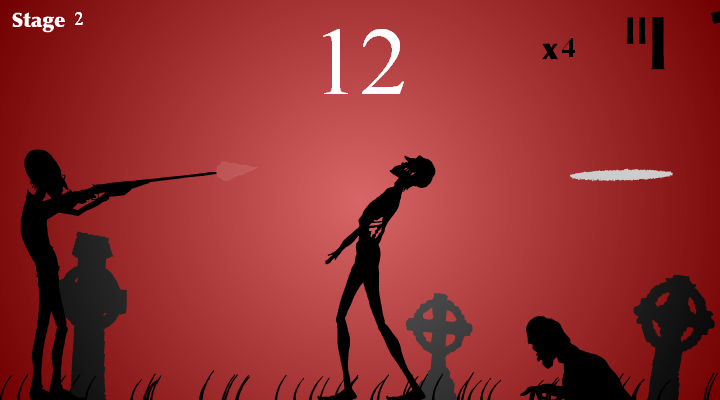
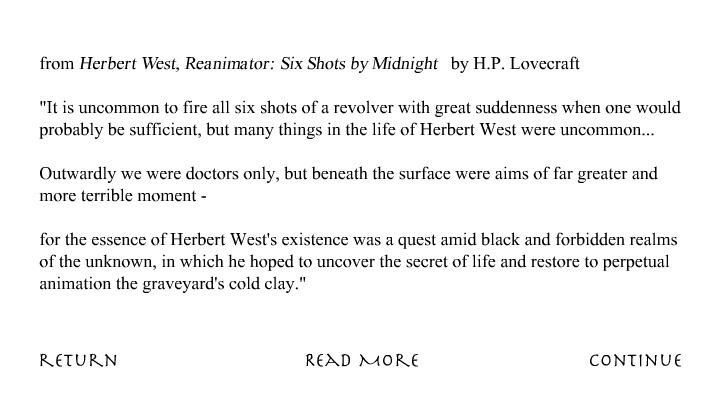
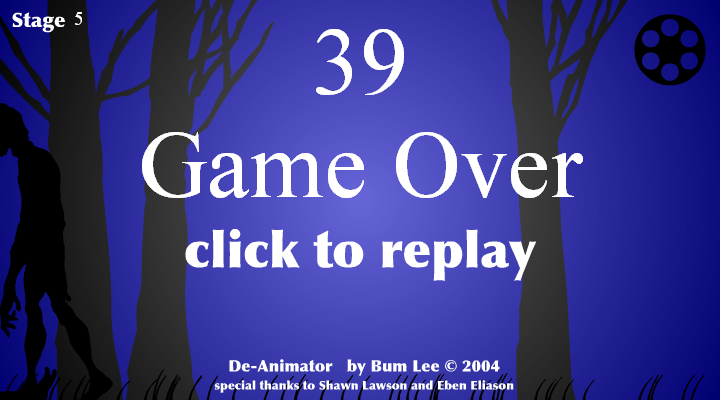
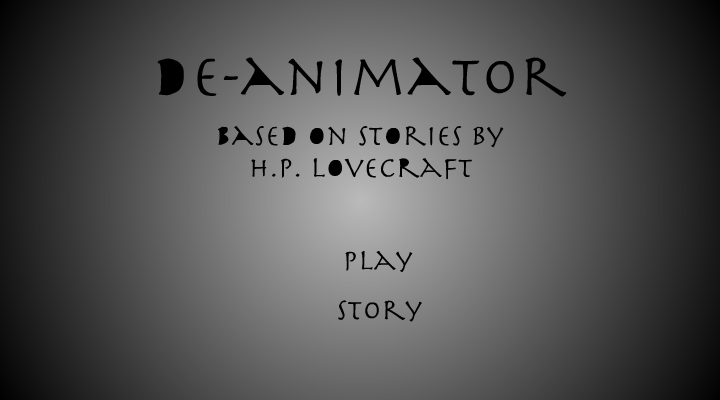
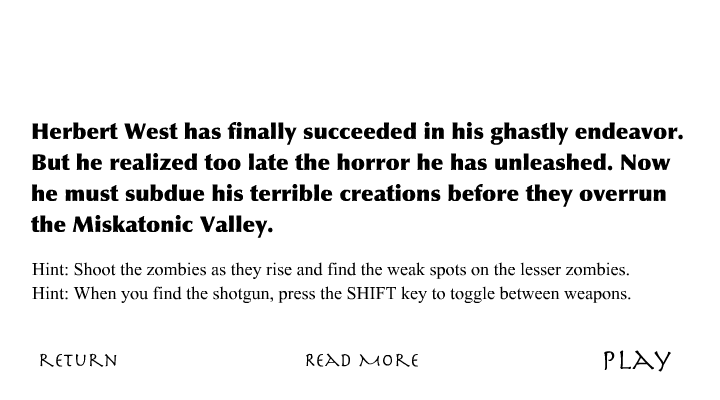



Reviews
There are no reviews yet.